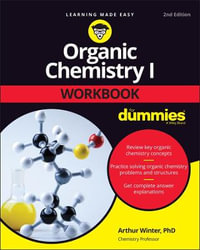| Preface: Spe In Perspective | p. iii |
| Contributors | p. ix |
| Introduction To Solid-Phase Extraction | p. 1 |
| The Sample Preparation Problem | p. 1 |
| Solid-Phase Extraction: What It is and What it Does | p. 2 |
| A Brief History of Solid-Phase Extraction | p. 5 |
| Terminology | p. 12 |
| Literature and Applications | p. 12 |
| An Overview of This Book | p. 14 |
| Conclusions | p. 15 |
| References | p. 16 |
| Spe Sorbents and Formats | p. 19 |
| Introduction | p. 19 |
| Sorbent Materials | p. 20 |
| Solid-Phase Extraction Apparatus | p. 33 |
| Conclusions | p. 36 |
| References | p. 37 |
| The Sample Matrix and its Influence on Method Development | p. 39 |
| Introduction | p. 40 |
| Analysis of the Matrix | p. 41 |
| Negation of Analyte/Matrix Interactions | p. 44 |
| A Survey of Sample Types | p. 54 |
| Conclusions | p. 86 |
| References | p. 86 |
| Handling Large Volume Samples: Applications of Spe to Environmental Matrices | p. 97 |
| Introduction | p. 97 |
| Large Volume Samples | p. 98 |
| Natural Organic Matter | p. 106 |
| Hydrophilic/Hydrophobic Extremes | p. 112 |
| Conclusions | p. 118 |
| References | p. 119 |
| Spe Technology -- Principles and Practical Consequences | p. 125 |
| Introduction | p. 125 |
| Sorptive Processes | p. 128 |
| Performance Characteristics of Spe Devices | p. 132 |
| Characterization of Spe Sorbents | p. 149 |
| A Summary of Solvents Used in Spe | p. 172 |
| Conclusions | p. 178 |
| References | p. 179 |
| Theory Meets Practice | p. 183 |
| Introduction | p. 183 |
| Physical Properties of Solid-Phase Extraction Devices | p. 185 |
| Determination of Breakthrough Volumes | p. 196 |
| Prediction Methods for Breakthrough Volumes | p. 198 |
| Recovery of Sorbent-Immobilized Analytes | p. 212 |
| Sorbent Trapping of Volatile Compounds From Air | p. 217 |
| Solid-Phase Microextraction | p. 219 |
| Conclusions | p. 221 |
| References | p. 222 |
| Secondary Interactions and Mixed-Mode Extraction | p. 227 |
| Introduction | p. 227 |
| Cation-Exchange Effects | p. 229 |
| Hydrogen Bonding Effects | p. 231 |
| Minimization of Secondary Interactions | p. 233 |
| Mixed-Mode Extractions | p. 237 |
| Conclusions | p. 239 |
| References | p. 240 |
| Solid-Phase Extraction for Broad-Spectrum Drug Screening in Toxicological Analysis | p. 243 |
| Introduction | p. 244 |
| A General Solid-Phase Extraction Procedure | p. 246 |
| Specific Cases | p. 250 |
| General Considerations | p. 258 |
| Automation and Subsequent Method Modifications | p. 261 |
| Modification of Broad-Screen Extractions for Confirmation Testing | p. 267 |
| Conclusions | p. 269 |
| References | p. 269 |
| The Application of Spe to Veterinary Drug Abuse | p. 273 |
| Introduction | p. 274 |
| The Use of Spe in Forensic Racing Chemistry | p. 276 |
| Examples of Successful Extractions | p. 285 |
| Limitations of Spe for Veterinary Samples | p. 295 |
| The Crystal Ball | p. 298 |
| Conclusions | p. 303 |
| References | p. 304 |
| Solid-Phase Extraction of Biological Samples | p. 307 |
| Introduction | p. 307 |
| General Concerns With Biological Samples | p. 308 |
| A Strategy for Method Development for Plasma Samples | p. 309 |
| Extracting Urine and Solid Tissue Samples | p. 328 |
| Conclusions | p. 329 |
| References | p. 329 |
| Solid-Phase Extraction Mediated By Covalent Bonding: Applications of Immobilized Phenylboronic Acid | p. 331 |
| Introduction | p. 331 |
| Mechanisms of Interaction of Analytes With Immobilized Pba | p. 332 |
| Spe Applications of Immobilized Pba | p. 335 |
| Conclusions | p. 346 |
| References | p. 346 |
| Immuno-Affinity Extraction | p. 349 |
| Introduction | p. 349 |
| Types of Affinity Columns | p. 350 |
| Optimization of Antibody-Mediated Extraction | p. 353 |
| Applications | p. 355 |
| Conclusions | p. 358 |
| References | p. 358 |
| Matrix Solid-Phase Dispersion (Mspd) | p. 361 |
| Introduction | p. 361 |
| The Components of an Mspd Extraction | p. 364 |
| The Parameters of an Mspd Extraction | p. 371 |
| Requirements for Mspd-Dedicated Sorbents | p. 375 |
| Conclusions | p. 375 |
| References | p. 376 |
| Automation of Solid-Phase Extraction | p. 381 |
| Introduction | p. 381 |
| Understanding Automated Spe | p. 382 |
| Workstations for Automated Spe | p. 385 |
| Automation of Spe Applications | p. 399 |
| Conclusions | p. 409 |
| References | p. 410 |
| Integration of Spe With the Analytical Technique, Part I - Liquid Chromatography | p. 411 |
| Introduction | p. 411 |
| The Development of on-Line Spe/Liquid Chromatography | p. 412 |
| Theory and Practical Implications | p. 417 |
| Applications of on-Line Solid-Phase Extraction | p. 423 |
| Conclusions | p. 433 |
| References | p. 434 |
| Integration of Spe With the Analytical Technique, Part II | p. 437 |
| Introduction | p. 437 |
| Alternative Desorption/Trapping Strategies | p. 439 |
| Spe and Spectroscopy | p. 445 |
| Spe and Gas Chromatography | p. 452 |
| Other Analytical Techniques | p. 458 |
| Conclusions | p. 460 |
| References | p. 461 |
| Concluding Thoughts -- New Directions for Spe | p. 467 |
| Where Does the Future of Spe Lie? | p. 467 |
| What Will Permit Future Spe Development? | p. 468 |
| What Will Drive Future Spe Development? | p. 469 |
| What Effect Will These Changes Have on the Spe Device Itself? | p. 470 |
| How Will the Sorbents Evolve? | p. 473 |
| Will Spe Ever Become A Redundant Technology? | p. 476 |
| References | p. 477 |
| A Summary of Common Matrix Properties and Components | p. 481 |
| A Comparison Between Solid-Phase Extraction and Other Sample Processing Techniques | p. 489 |
| Ion Exchange Extraction | p. 493 |
| A Summary of Current Suppliers of Spe Automation Equipment | p. 499 |
| Index | p. 503 |
| Table of Contents provided by Syndetics. All Rights Reserved. |
























